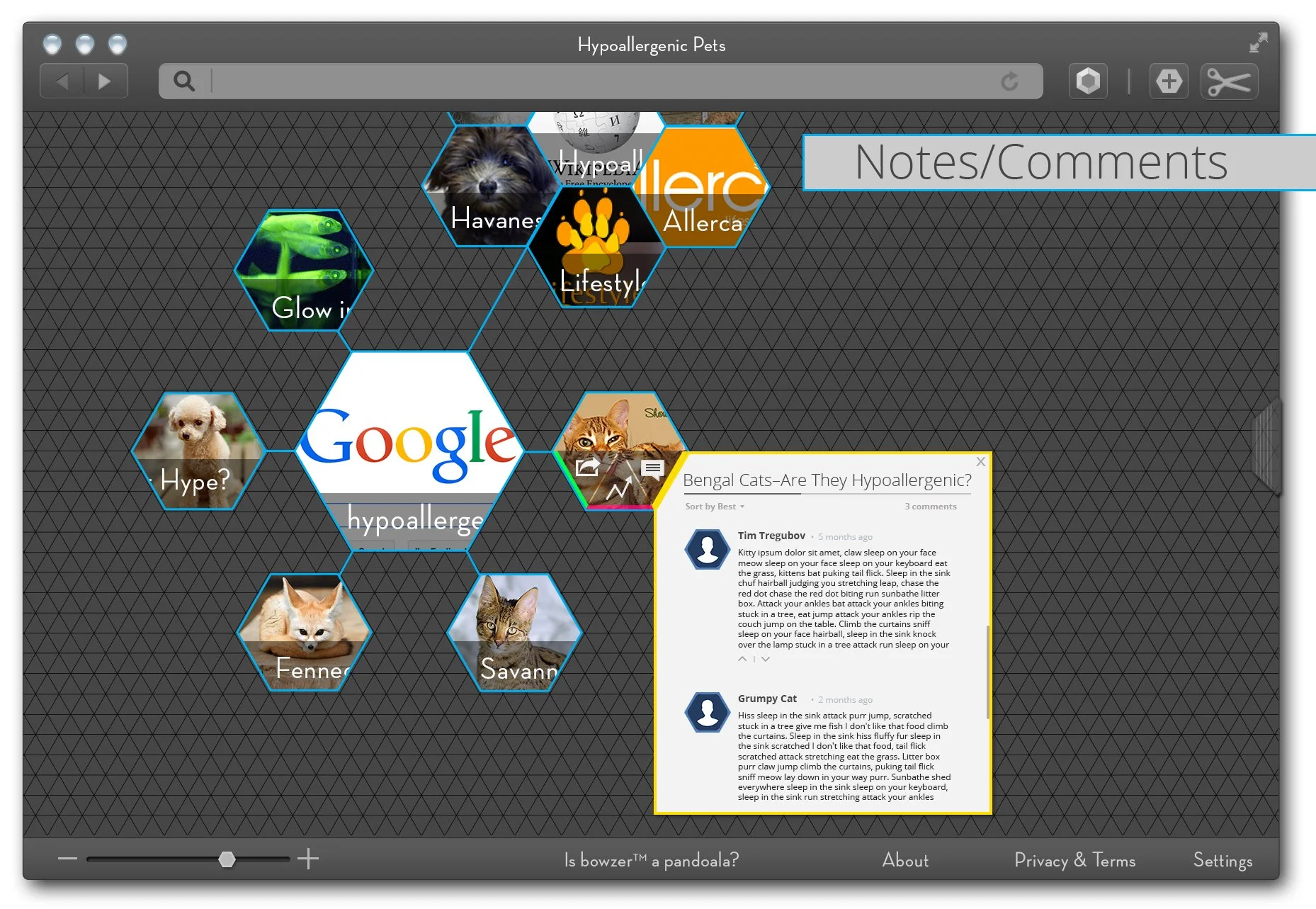Bowzer is a web browser that fixes the tab browser window hierarchy problem.
Viewing entries in
portfolio
Attention is a limited resource that intrinsically dictates our perceptions, memories, and behaviors. Our aim is to use attentional measures to enrich graphic novel narratives. FrameShift uses eye tracking to measure reader attention and changes text and visual elements later on in the story accordingly. We have built an extensible framework for using attention to introduce perceptual changes in narratives. We use attention as an indirect method for interactions and introduce shiftable frame nodes that change readers’ belief states over time.
"Finding backbone substructures that match an arbitrary query structural motif, composed of multiple disjoint segments, is a problem of growing relevance in structure prediction and protein design" -- Gevorg Grigoryan.
Gevorg's lab built a tool called Method of Accelerated Search for Tertiary Ensemble Representatives MASTER, which is essentially a partial distance search engine for the Protein Data Bank.
I took on building a PyMol module and a server API component as a weekend project to allow his lab at first but then others to be able to use his _MASTER_ search database for building proteins.
Crafting 3D paper pop-ups can yield complex, expressive geometries, and can help develop spatial reasoning skills. However, designing the cuts and folds is often a frustrating process due to the strict geometric constraints. Foldlings is a tool that assists in this exploratory process, allowing a user to draw lines and be guided in creating well-defined pop-ups. We simulate the pop-up in 3D, allowing users to quickly preview their design before printing or laser cutting. We created an iOS app written in Swift, and performed informal user tests with 23 undergraduate students.
This is a Rails + Backbone app that was designed and built at the DALI Lab for the United States Holocaust Memorial Museum in 2013. The site is driven by statistical models developed by the Dartmouth Department of Government and the Center for the Prevention of Genocide. The models attempt to predict the risk of atrocities over time and place; our site aims to communicate this data to a large audience.
It has been a month since ChessInvaders was published in the App Store! It has "sold" (for free) more than 6k copies, and has been engaged with (played through at least one level) almost 15k times. The download rate has slowed to about 10 a day, but about double that are playing every day! I'm pretty happy with that given that it's a pretty hard and definitely beta quality game experience.
I used to do a lot of wood carving, chip carving in particular. This is a style of woodcarving found in traditional folk art around the world. Geometric patterns composed of 2, 3, or 4 sided pyramid shaped chips are carved out of the surface, usually with a single knife. Each chip comes out as a single piece. It can be used to decorate large building surfaces as well as more intricate pieces such as boxes or art frames.
Our goal for TiNZ was to create a simple, but addicting game that played off of old-fashioned handheld and vintage arcade games, but utilized newer technology that allowed for a more modern feel and the implementation of more exciting features. We succeeded in creating a challenging game that takes the user's movements as inputs via an accelerometer to move the player on the board, which consists of a small 8x8 RGB LED matrix with a seven-segment display showing the timer and score. A piezo is also included to produce different sounds for specific actions in the game. These components contribute to a gaming experience that is stimulating both tactilely, visually and aurally. The game design also makes the game easy to reprogram to include more levels and additional features.
When Google acquired SketchUp in 2006, they announced a competition for college students across the nation to model their campus in 3D using SketchUp, and then to geolocate the buildings in Google Earth. Seven winning teams would then be invited to a three day SketchUp seminar at Google Headquarters in Palo Alto and their models added to the official buildings layer in the Google Earth database. In a span of about 2 months, I helped lead a team of 10 individuals who collectively took over 2000 photographs and modeled over 130 buildings. On the day of the submission deadline, we submitted a complete model of the entire Dartmouth campus. A month later, among 350 teams, we were announced as one of the winners.
















